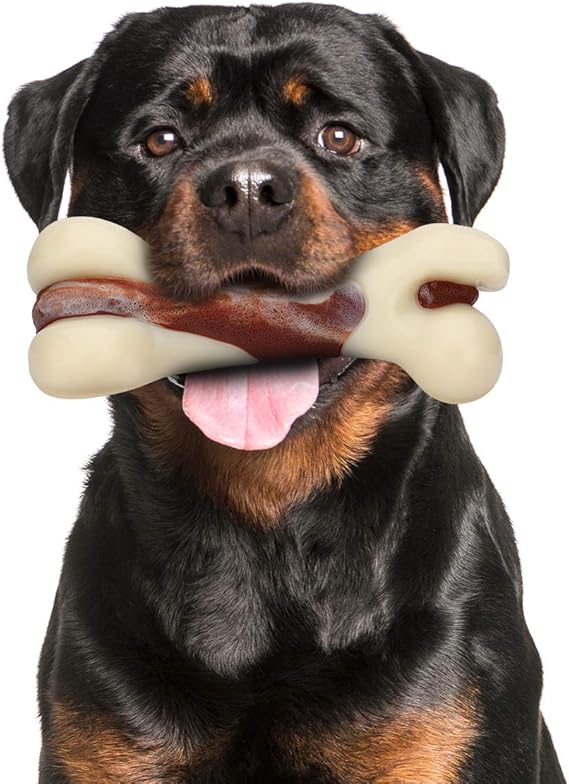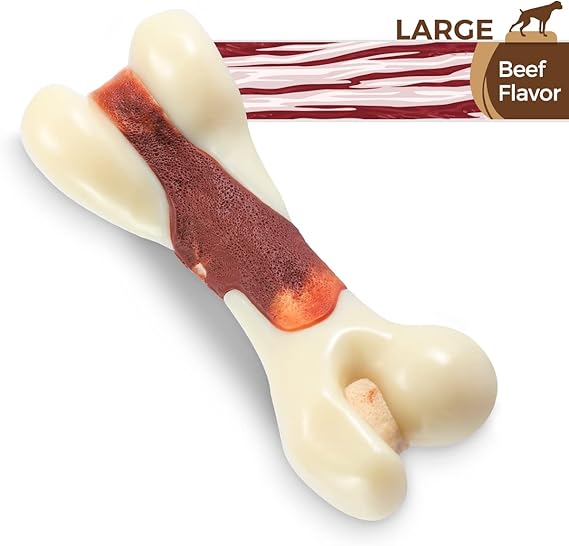
The Best Guide to Dog Bones
If you’re a dog owner, you know how much your canine companion loves a good chew. Dog bones are more than just treats; they serve as toys, dental aids, and even stress relievers. However, with so many options available, choosing the right dog bone can be overwhelming. This guide will walk you through everything you need to know about dog bones—from types and benefits to safety tips—helping you make the best choice for your furry friend.
Why Are Dog Bones Important?
Dog bones aren’t just tasty snacks. They play a crucial role in your dog’s overall health and well-being. For starters, chewing is a natural behavior for dogs. It helps keep their jaws strong and teeth clean. Moreover, chewing on the right bone can reduce boredom and prevent destructive behaviors, especially if your dog spends time alone.
In addition, many dog bones are designed to promote dental health. Chewing helps scrape away plaque and tartar buildup, which can reduce the risk of gum disease and bad breath. Therefore, incorporating dog bones into your pet’s routine can contribute to a healthier mouth and happier pup.
Types of Dog Bones: Which One Suits Your Dog?
Understanding the different types of dog bones will help you pick the perfect one for your pet’s size, chewing style, and dietary needs.
Rawhide Bones
Rawhide bones are popular because they last a long time and satisfy the chewing instinct. However, not all rawhide is created equal. High-quality rawhide originates from the inner layer of cow or horse hides and is free from harmful chemicals.
Pros:
- Long-lasting chew
- Helps clean teeth
- Available in various shapes and sizes
Cons:
- Can cause choking if swallowed in large pieces
- Some dogs may have trouble digesting rawhide
If you decide to give rawhide to your dog, supervise chewing sessions and choose appropriately sized pieces.

Natural Bones
Natural bones come directly from animals and can be either raw or cooked. Raw bones are generally safer because cooking makes bones brittle and prone to splintering.
Pros:
- Highly palatable and nutritious
- Provide minerals like calcium and phosphorus
- Aid in dental health
Cons:
- Risk of bacterial contamination if not handled properly
- Potential for broken teeth if bones are too hard
Veterinarians often recommend raw bones over cooked ones, but it’s essential to consult your vet before introducing them.
Synthetic Bones
Made from durable materials like nylon or rubber, synthetic bones are designed for aggressive chewers. Brands like Nylabone offer flavored options that keep dogs engaged.
Pros:
- Very durable and long-lasting
- Less risk of splintering or choking
- Suitable for heavy chewers
Cons:
- Not edible, so no nutritional benefit
- Can wear down teeth if overly hard
Synthetic bones are great alternatives for dogs that destroy natural bones quickly or have sensitive stomachs.
Edible Dental Chews
Some dog bones double as dental chews, combining tasty flavors with ingredients that promote oral health. These products often contain enzymes or special textures to reduce plaque.
Pros:
- Improve dental hygiene
- Tasty and easy to digest
- Convenient for busy owners
Cons:
- Usually less long-lasting than rawhide or synthetic bones
- May contain additives or preservatives
Look for dental chews approved by the Veterinary Oral Health Council (VOHC) to ensure quality.
How to Choose the Right Dog Bone
Selecting the right dog bone depends on several factors including your dog’s size, chewing habits, and health status.
Consider Your Dog’s Size and Breed
Small dogs require smaller, softer bones to avoid choking hazards, while large breeds benefit from bigger, sturdier options. For example, a Chihuahua may enjoy a soft rawhide chew, whereas a Labrador Retriever needs a robust synthetic bone.
Assess Chewing Style
Some dogs are gentle chewers and can enjoy softer bones, while aggressive chewers need tougher options. If your dog quickly destroys bones, synthetic or natural raw bones might be better choices.
Check for Allergies and Sensitivities
If your dog has food allergies or digestive issues, avoid bones with artificial flavors or ingredients. Natural bones or hypoallergenic synthetic options are safer.
Consult Your Veterinarian
Before introducing any new type of dog bone, especially raw or natural ones, talk with your vet. They can recommend safe options based on your dog’s health and age.
Safety Tips for Giving Your Dog Bones
While dog bones can be beneficial, safety is paramount. Follow these guidelines to keep your pet safe:
- Supervise chewing: Always watch your dog to prevent choking or swallowing large pieces.
- Choose appropriate size: The bone should be larger than your dog’s mouth to avoid swallowing hazards.
- Avoid cooked bones: Cooked bones can splinter and cause internal injuries.
- Limit chewing time: Prolonged chewing can wear down teeth or cause jaw fatigue.
- Discard damaged bones: Throw away bones that break or splinter to avoid ingestion of sharp pieces.
- Store properly: Keep bones in a clean, dry place to prevent bacterial growth.
Benefits of Dog Bones: More Than Just a Treat
Giving your dog the right bone offers several benefits beyond taste:
- Dental health: Chewing helps reduce plaque and tartar.
- Mental stimulation: Chewing keeps dogs occupied and reduces stress.
- Jaw exercise: Strengthens jaw muscles.
- Behavioral improvement: Reduces boredom and destructive chewing.
For example, a study published in the Journal of Veterinary Dentistry shows that chewing on appropriate bones significantly decreases plaque accumulation in dogs.
Dog Toys Keeping Your Furry Friend Happy and Healthy
Frequently Asked Questions About Dog Bones
Can puppies chew dog bones?
Puppies can chew on softer, specially designed bones. Avoid hard bones that may damage their developing teeth.
How often should I give my dog a bone?
Moderation is key. Offering bones a few times a week is usually enough to provide benefits without overdoing it.
Are raw bones safe for all dogs?
Raw bones can be safe if handled properly and chosen based on your dog’s size and chewing habits. Always consult your vet first.
What if my dog swallows a bone piece?
If your dog swallows a small piece and shows no signs of distress, monitor them closely. However, seek immediate veterinary care if you notice choking, vomiting, or lethargy.
Conclusion: Choosing the Perfect Dog Bone
Dog bones are fantastic tools for keeping your dog healthy, happy, and entertained. By understanding the different types, knowing your dog’s needs, and following safety precautions, you can select the perfect bone for your furry friend. Remember, variety is also beneficial—rotating between different bones can keep things exciting and provide balanced benefits.
Ultimately, your dog will thank you with wagging tails and bright smiles for choosing bones that support their health and natural instincts. So go ahead, pick the right bone, and watch your dog enjoy hours of joyful chewing!
